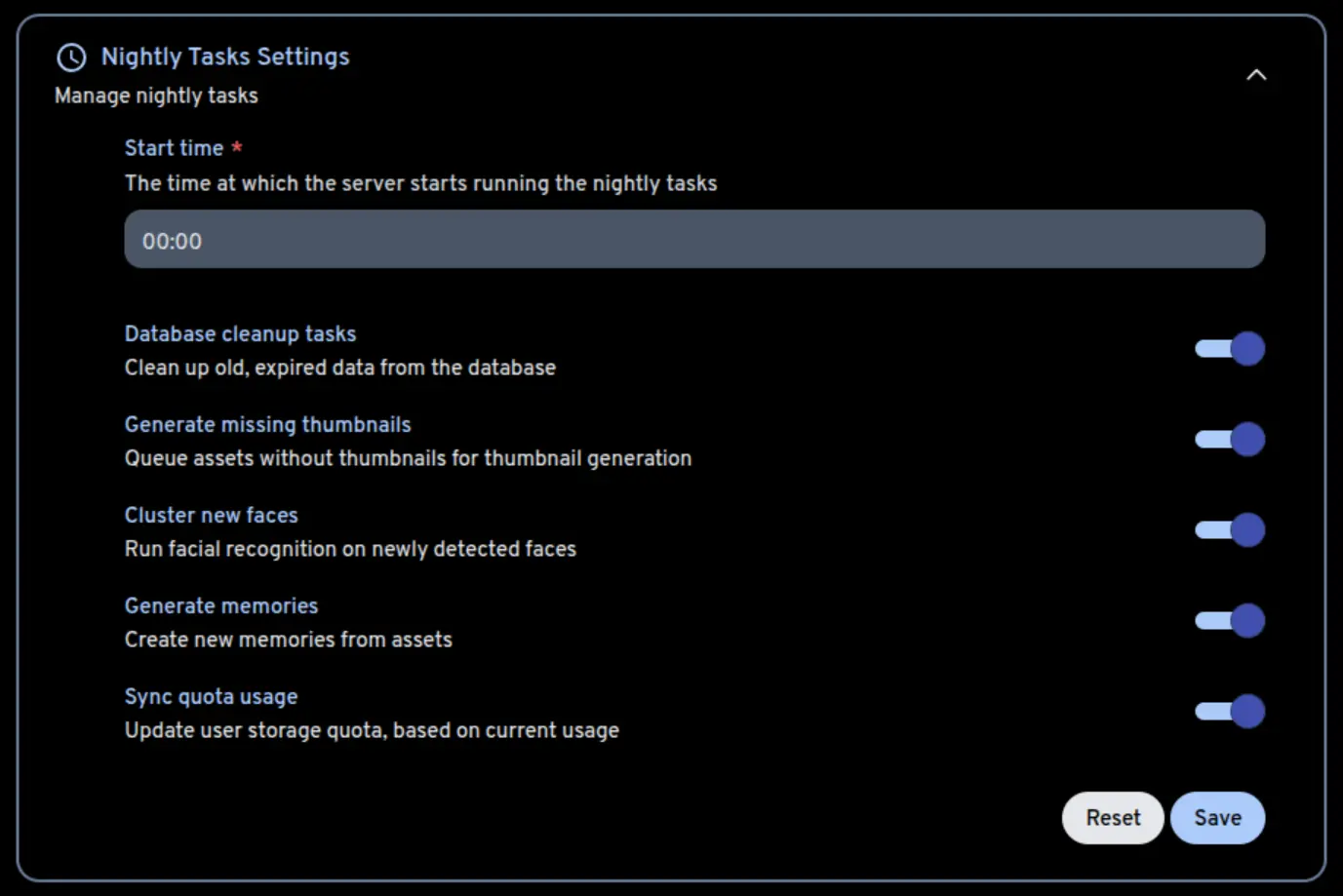Jobs and Workers
Workers
Architecture
The immich-server container contains multiple workers:
api: responds to API requests for data and files for the web and mobile app.microservices: handles most other work, such as thumbnail generation and video encoding, in the form of jobs. Simply put, a job is a request to process data in the background.
Split workers
If you prefer to throttle or distribute the workers, you can do this using the environment variables to specify which container should pick up which tasks.
For example, for a simple setup with one container for the Web/API and one for all other microservices, you can do the following:
Copy the entire immich-server block as a new service and make the following changes to the copy:
- immich-server:
- container_name: immich_server
...
- ports:
- - 2283:2283
+ immich-microservices:
+ container_name: immich_microservices
Once you have two copies of the immich-server service, make the following changes to each one. This will allow one container to only serve the web UI and API, and the other one to handle all other tasks.
services:
immich-server:
...
+ environment:
+ IMMICH_WORKERS_INCLUDE: 'api'
immich-microservices:
...
+ environment:
+ IMMICH_WORKERS_EXCLUDE: 'api'
Jobs
When a new asset is uploaded it kicks off a series of jobs, which include metadata extraction, thumbnail generation, machine learning tasks, and storage template migration, if enabled. To view the status of a job navigate to the Administration -> Jobs page.

Additionally, some jobs (such as memories generation) run on a schedule, which is every night at midnight by default. To change when they run or enable/disable a job navigate to System Settings -> Nightly Tasks Settings.

Some jobs (External Libraries scanning, Database Dump) are configured in their own sections in System Settings.